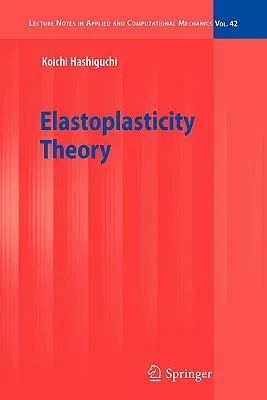Koichi Hashiguchi
(Author)Elastoplasticity TheoryPaperback, 22 October 2010

Qty
1
Turbo
Ships in 2 - 3 days
In Stock
Free Delivery
Cash on Delivery
15 Days
Free Returns
Secure Checkout
Part of Series
Lecture Notes in Applied and Computational Mechanics
Print Length
416 pages
Language
English
Publisher
Springer
Date Published
22 Oct 2010
ISBN-10
3642101321
ISBN-13
9783642101328
Description
Product Details
Author:
Book Format:
Paperback
Country of Origin:
NL
Date Published:
22 October 2010
Dimensions:
23.39 x
15.6 x
2.24 cm
ISBN-10:
3642101321
ISBN-13:
9783642101328
Language:
English
Location:
Berlin, Heidelberg
Pages:
416
Publisher:
Weight:
603.28 gm

